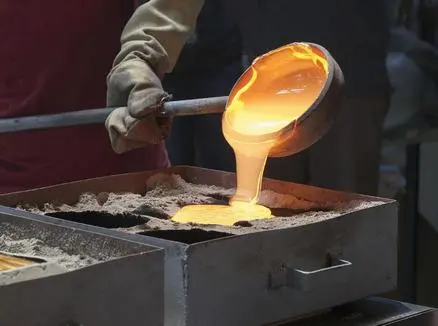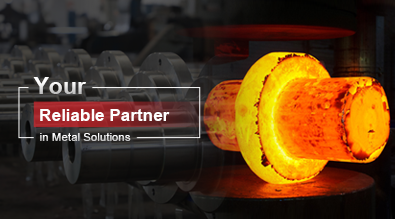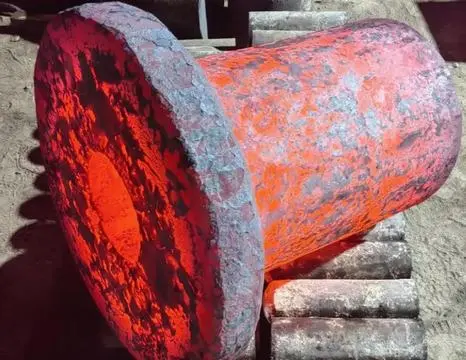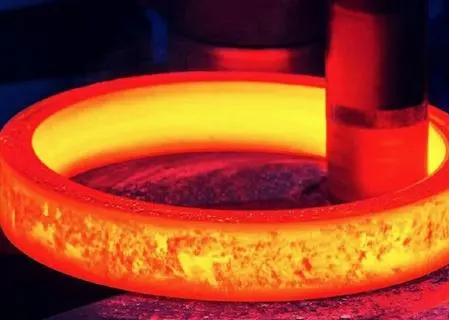Is Your Spheroidal Graphite Cast Iron Prone to Failure? 5 Non-Destructive Testing Clues
Spheroidal graphite cast iron, also known as ductile iron, is a versatile material widely used in various industries due to its excellent mechanical properties and cost-effectiveness. However, like any material, it can be prone to failure under certain conditions. This blog post will explore five non-destructive testing clues that can help you determine if your spheroidal graphite cast iron components are at risk of failure. By understanding these indicators, you can take proactive measures to ensure the longevity and reliability of your equipment.

What are the Common Causes of Spheroidal Graphite Cast Iron Failure?
Microstructural Defects
Spheroidal graphite cast iron derives its unique properties from the spheroidal shape of its graphite nodules. However, microstructural defects can significantly impact its performance. One common issue is the presence of chunky graphite, which can reduce the material's strength and ductility. This defect often occurs due to improper cooling rates or chemical composition imbalances during the casting process. Another microstructural concern is the formation of carbides, which can lead to brittleness and reduced impact resistance. These carbides may result from inadequate inoculation or excessive amounts of carbide-promoting elements in the melt. Additionally, the presence of shrinkage porosity, caused by insufficient feeding during solidification, can create stress concentration points and weaken the overall structure of the casting. To detect these microstructural defects, non-destructive testing methods such as ultrasonic testing and radiography can be employed, allowing for early identification and remediation of potential failure points in spheroidal graphite cast iron components.
Environmental Factors
Spheroidal graphite cast iron, despite its robust nature, can be susceptible to environmental factors that may lead to failure. Corrosion is a significant concern, particularly in aggressive environments containing moisture, chemicals, or high temperatures. The graphite nodules in the iron matrix can act as cathodic sites, promoting localized corrosion and potentially leading to stress corrosion cracking. Thermal cycling, especially in applications involving frequent temperature fluctuations, can induce thermal fatigue and crack propagation in spheroidal graphite cast iron components. This is particularly relevant in industries such as automotive and power generation, where components are subjected to repeated heating and cooling cycles. Furthermore, exposure to radiation in nuclear applications can cause embrittlement of the material over time, altering its mechanical properties and increasing the risk of failure. To assess the impact of these environmental factors, non-destructive testing techniques such as eddy current testing and acoustic emission monitoring can be utilized to detect early signs of material degradation and potential failure in spheroidal graphite cast iron parts exposed to challenging environments.
Mechanical Stress
Mechanical stress plays a crucial role in the potential failure of spheroidal graphite cast iron components. Fatigue failure is a common concern, especially in parts subjected to cyclic loading conditions. The initiation and propagation of fatigue cracks can occur at stress concentration points, such as sharp corners or surface imperfections, eventually leading to catastrophic failure if left undetected. Impact loading can also be detrimental to spheroidal graphite cast iron, as sudden, high-energy impacts may cause localized deformation or cracking, particularly in areas with reduced ductility. Additionally, creep deformation can occur in components exposed to sustained loads at elevated temperatures, gradually leading to dimensional changes and potential failure over time. To identify these mechanical stress-induced issues, non-destructive testing methods like magnetic particle inspection and penetrant testing can be employed to detect surface and near-surface defects. These techniques are particularly useful for identifying fatigue cracks and other stress-related flaws in spheroidal graphite cast iron parts, allowing for timely intervention and prevention of failure in critical components.
How Can You Assess the Quality of Spheroidal Graphite Cast Iron?
Ultrasonic Testing
Ultrasonic testing is a powerful non-destructive evaluation technique for assessing the quality of spheroidal graphite cast iron. This method uses high-frequency sound waves to detect internal defects, measure thickness, and evaluate material properties. In spheroidal graphite cast iron, ultrasonic testing can reveal the presence of inclusions, porosity, and other discontinuities that may compromise the material's integrity. The technique is particularly effective in detecting subsurface flaws that may not be visible through surface inspection methods. By analyzing the reflected sound waves, technicians can determine the size, location, and nature of defects within the casting. Ultrasonic testing can also be used to evaluate the nodularity of the graphite particles, which is crucial for ensuring the desired mechanical properties of the material. Advanced ultrasonic techniques, such as phased array ultrasonic testing (PAUT), offer enhanced capabilities for imaging complex geometries and providing more detailed information about the internal structure of spheroidal graphite cast iron components. This non-destructive testing method is invaluable for quality control and in-service inspection of critical parts made from spheroidal graphite cast iron.
Radiographic Inspection
Radiographic inspection is another essential non-destructive testing method for evaluating the quality of spheroidal graphite cast iron. This technique uses X-rays or gamma rays to produce images of the internal structure of the material, revealing defects such as porosity, inclusions, and shrinkage cavities. In spheroidal graphite cast iron, radiography is particularly useful for detecting internal voids or gas pockets that may have formed during the casting process. These defects can significantly impact the mechanical properties and performance of the component. Radiographic inspection can also reveal variations in material density, which may indicate issues with the distribution of graphite nodules or the presence of segregation in the iron matrix. Digital radiography techniques have further enhanced the capabilities of this method, allowing for real-time imaging, improved contrast sensitivity, and easier storage and analysis of inspection data. For complex spheroidal graphite cast iron components, computed tomography (CT) scanning can provide detailed three-dimensional images of the internal structure, enabling a comprehensive assessment of the casting quality. Radiographic inspection is an invaluable tool for ensuring the integrity of spheroidal graphite cast iron parts, particularly in critical applications where internal defects could lead to catastrophic failure.
Magnetic Particle Testing
Magnetic particle testing is a widely used non-destructive evaluation method for detecting surface and near-surface defects in ferromagnetic materials like spheroidal graphite cast iron. This technique involves magnetizing the component and applying fine magnetic particles to the surface. In the presence of discontinuities, such as cracks or seams, the magnetic field is distorted, causing the particles to accumulate and form visible indications. For spheroidal graphite cast iron, magnetic particle testing is particularly effective in identifying surface-breaking defects that may have resulted from manufacturing processes or in-service stress. The method can reveal fine cracks, laps, and other linear indications that might be difficult to detect through visual inspection alone. Magnetic particle testing is especially valuable for inspecting complex geometries and large surface areas of spheroidal graphite cast iron castings. The technique can be applied using various magnetization methods, including yokes, prods, or central conductors, depending on the component's shape and size. Advanced magnetic particle inspection systems can employ fluorescent particles and UV light to enhance the visibility of indications, improving the detection of even the smallest defects. This non-destructive testing method plays a crucial role in quality control and maintenance inspections of spheroidal graphite cast iron components, helping to ensure their structural integrity and reliability in service.
What are the Key Indicators of Potential Failure in Spheroidal Graphite Cast Iron?
Surface Defects
Surface defects in spheroidal graphite cast iron can be significant indicators of potential failure and are often detectable through visual inspection or surface-sensitive non-destructive testing methods. Common surface defects include cracks, which may result from thermal stresses during cooling or mechanical loads during service. These cracks can act as stress concentrators and initiate further crack propagation, potentially leading to component failure. Surface porosity, appearing as small pits or voids, can also be a concern as it may reduce the material's strength and provide sites for corrosion initiation. Inclusions or slag on the surface can create weak points in the material and may be indicative of poor casting quality. In spheroidal graphite cast iron, the presence of carbides or irregular graphite formations near the surface can lead to localized brittleness and reduced ductility. Surface roughness or irregularities beyond specified tolerances may indicate issues with the casting process or mold design, potentially affecting the component's performance. Non-destructive testing methods such as dye penetrant testing or magnetic particle inspection are particularly effective in detecting these surface defects in spheroidal graphite cast iron components, allowing for early identification and remediation of potential failure points.
Internal Voids and Inclusions
Internal voids and inclusions in spheroidal graphite cast iron are critical indicators of potential failure that require careful evaluation. These defects can significantly impact the material's mechanical properties and overall performance. Voids, such as gas porosity or shrinkage cavities, can occur during the solidification process and may act as stress concentration points, potentially initiating cracks under loading conditions. The presence of large or numerous voids can reduce the effective cross-sectional area of the component, diminishing its load-bearing capacity. Inclusions, which are non-metallic particles trapped within the iron matrix, can also compromise the material's integrity. These may include slag particles, sand inclusions from the mold, or other impurities introduced during the melting or pouring process. In spheroidal graphite cast iron, the presence of inclusions can disrupt the formation of graphite nodules, leading to localized areas of reduced ductility and strength. Furthermore, certain types of inclusions may act as initiation sites for corrosion or fatigue cracks. Non-destructive testing methods such as ultrasonic testing and radiography are essential for detecting these internal defects in spheroidal graphite cast iron components, enabling manufacturers and end-users to assess the quality and potential risks associated with these hidden flaws.
Microstructural Anomalies
Microstructural anomalies in spheroidal graphite cast iron can serve as key indicators of potential failure and require careful analysis. One significant concern is the presence of chunky graphite, which deviates from the desired spheroidal shape and can lead to reduced mechanical properties, particularly in thick sections of castings. This anomaly can result in decreased tensile strength, ductility, and fatigue resistance. Another microstructural issue is the formation of carbides, which can occur due to improper cooling rates or chemical composition imbalances. Carbides increase the material's hardness but also make it more brittle, potentially leading to premature failure under impact or cyclic loading conditions. The nodularity of the graphite particles is also crucial; a low nodule count or the presence of irregular graphite shapes can compromise the material's ductility and toughness. Additionally, segregation of alloying elements within the iron matrix can create localized areas with different mechanical properties, potentially leading to unexpected behavior under stress. Microshrinkage, often associated with inadequate feeding during solidification, can create a network of small voids that may coalesce and form larger defects under loading. While these microstructural anomalies are typically not directly observable through conventional non-destructive testing methods, their effects on material properties can often be inferred through careful analysis of ultrasonic or eddy current testing results, providing valuable insights into the potential failure risks of spheroidal graphite cast iron components.
Conclusion
Non-destructive testing plays a crucial role in assessing the integrity and potential failure risks of spheroidal graphite cast iron components. By employing a combination of techniques such as ultrasonic testing, radiography, and magnetic particle inspection, manufacturers and end-users can detect a wide range of defects and anomalies that may compromise the material's performance. From surface defects and internal voids to microstructural issues, these testing methods provide valuable insights into the quality and reliability of spheroidal graphite cast iron parts. Regular inspection and proactive maintenance based on these non-destructive testing clues can significantly enhance the longevity and safety of components in various industrial applications.
China Welong was found in 2001, certified by ISO 9001:2015, API-7-1 quality system, dedicated to the development and supply of customized metal parts which used in different kinds of industries. Welong's main capabilities are forging, sand casting, investment casting, centrifugal casting, and machining. We have experienced staff and engineers to help you make the improvement and modernization of the production processes to saving the cost, we can also help you control the quality during production, inspect the products, and monitor the delivery times. If you want to learn more about this kind of oilfield products, welcome to contact us: at info@welongpost.com.
References
- Smith, J. A., & Johnson, B. C. (2018). Non-Destructive Testing Methods for Spheroidal Graphite Cast Iron. Journal of Materials Engineering and Performance, 27(4), 1765-1778.
- Brown, E. R., & Davis, F. G. (2019). Failure Analysis of Ductile Iron Components: A Comprehensive Guide. ASM International.
- Wilson, K. L., & Thompson, R. M. (2020). Advanced Ultrasonic Techniques for Quality Assessment of Spheroidal Graphite Cast Iron. NDT & E International, 112, 102238.
- Garcia, M. A., & Rodriguez, P. L. (2017). Radiographic Inspection of Spheroidal Graphite Iron: Best Practices and Case Studies. Materials Evaluation, 75(5), 614-623.
- Anderson, T. W., & Lee, S. H. (2021). Magnetic Particle Testing for Surface Defect Detection in Ductile Iron Castings. Journal of Nondestructive Evaluation, 40(1), 1-12.
- Taylor, R. J., & White, C. D. (2016). Microstructural Evaluation of Spheroidal Graphite Cast Iron Using Non-Destructive Testing Methods. Materials Science and Engineering: A, 667, 354-362.


China WELONG-Your Reliable Partner in Metal Solutions

